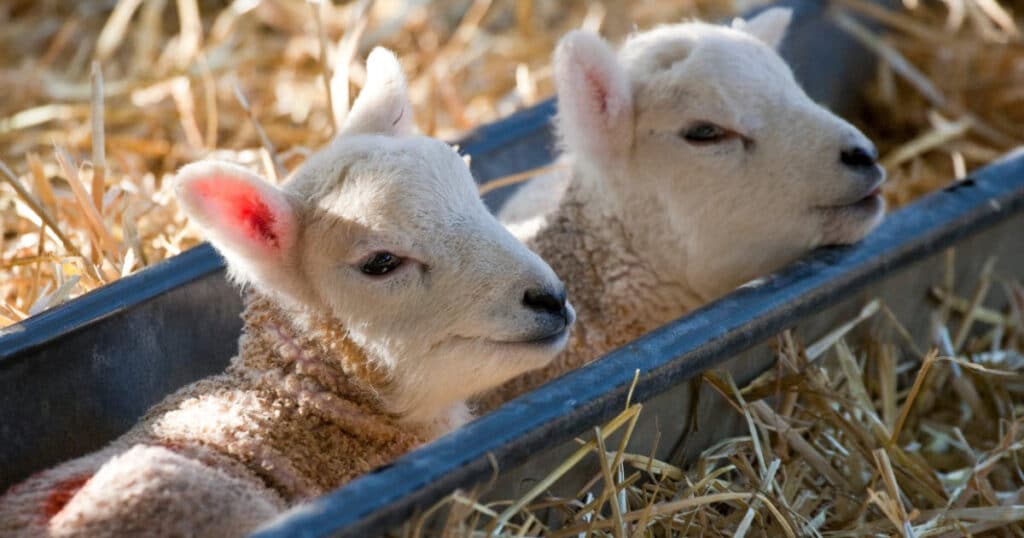Are you thinking about getting into sheep farming and wondering what creep feeding is? What on earth is a “creep,” anyway? These are questions I’ll tackle today. I will explain why creep feeding is important, as well as provide tips for creep feeding lambs for maximum growth. I will also discuss how to prevent overeating disease (enterotoxemia) until lambs are vaccinated for it.
What is Creep Feeding?
A creep is basically a separate pen where young sheep (lambs) can enter and exit through a creep panel, but mature sheep (ewes) cannot because the gaps are too small.
There is hay and grain available to the lambs here so that they can have plenty of food available to them on-demand, helping them grow healthy and strong.
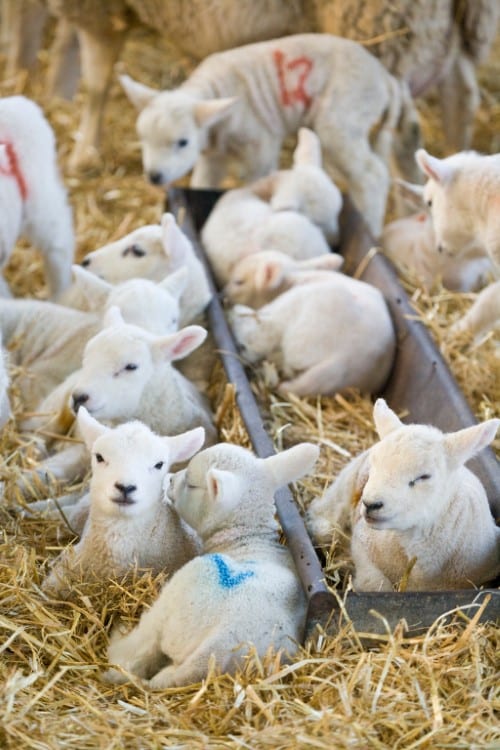
The creep gives nursing lambs extra nutrition. This can be especially important for lambs that are weaned early because they are in an intensive production system.
The practice of creep feeding is also especially beneficial for flocks where milk production for the lambs will be an issue in some way or in which there are many multiple births.
While it’s true that lambs are usually a minimum of three to four weeks old before they will start to eat noticeable amounts of feed, it’s best for lambs to get started on creep feed as quickly after birth as practicable.
When lambs have access to creep food from an extremely early age, it will help to promote stronger rumen development and get them used to dry feed.
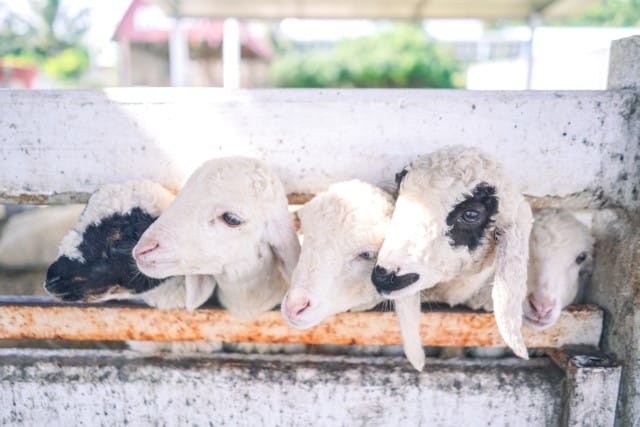
Another significant benefit of creep feeding is the fact that it makes early weaning (if early weaning is indeed planned) a much less stressful process for the lambs. Less stress for the animal is not only more humane but also keeps it healthier.
Tips for Setting Up a Creep Pen
A small opening in a gate or fence is the usual way that lambs will have access to a creep feed. Remember that it must be big enough for the lambs to pass through.
However, it’s essential that it not allow ewes, including thinner and smaller ones, from getting through.
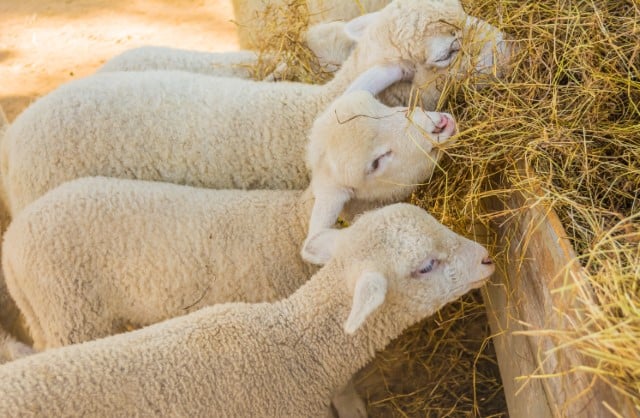
To prevent lambs from feeling they are too confined, make your creep gates have several openings. Try to plan things so that the lambs will be able to get to and through the creep area from several different sides.
Make sure that you put the creep pen in a place where the lambs will definitely find it. Add dry bedding to the area so that lambs can sleep there if they would like to.
When deciding how big to make the creep feeder space, make sure that there are about two inches of space for every lamb.
Don’t forget to include plenty of water in the creep area, too. Include hay as well, making sure it is the best quality.
Food for the Creep Pen to Promote Maximum Growth
All foodstuffs for the creep pen should be finely ground. This will be more attractive to the lambs.
Lambs especially love alfalfa hay, cracked or ground corn, and soybean meal.
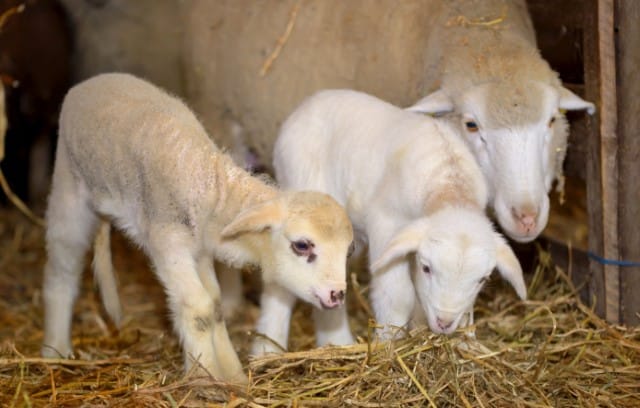
Stay away from pelleted feeds, choosing textured or crumbled varieties instead.
Make sure that the food in the creep pen is continually replenished. You don’t want lambs to go in there only to find no food at any point.
This may discourage them from entering again. The food must always be dry and fresh.
Remember the importance of protein in the lamb diet. These young animals still need to develop a large amount of lean muscle as they grow.
Only give completely natural foods to lambs. Older lambs don’t tend to need as much protein as younger ones, as they begin to accumulate more fat as opposed to just muscle.
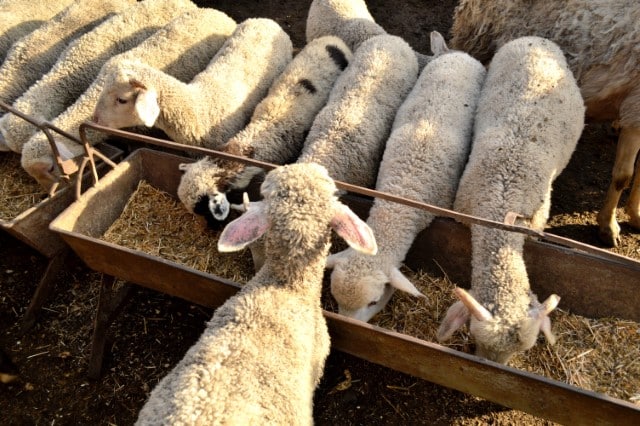
One common ration combination for creep feeding is 85% whole barley, 14% soybean meal, 2% food grade limestone, and 0.5% salt, as well as an ADE vitamin supplement.
Make sure that the grain component of the creep feed is increased only very gradually. For example, there should be a maximum increase of 10 percent every few days.
Preventing Overeating Disease (Enterotoxemia)
The feed you put in the creep pen should also include the addition of a coccidiostat. This is necessary for the prevention of a protozoan infection called coccidiosis that will lead to diarrhea and problems with production.
Two FDA-approved medications for this purpose are Bovatec and Deccox, as long as lambs are in confinement.
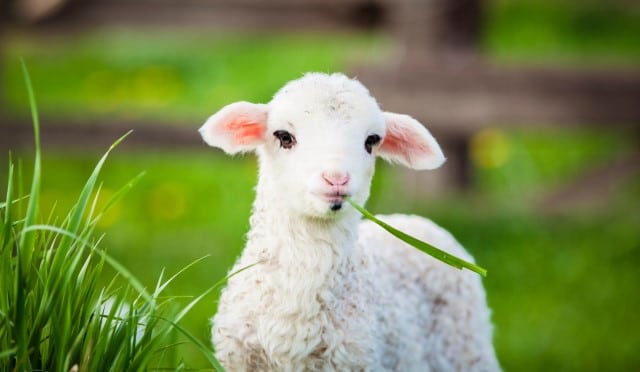
Vaccinations against Clostridium perfringens C & D also need to be given to lambs. Ideally, you should try to give lambs this vaccination before they start eating food.
Sometimes, however, this isn’t practicable, especially if your lambs are going to start eating when they’re seven days old. When the vaccination is given this young, it may not be effective.
Vaccinating Lambs for Overeating Disease
The best way to prevent overeating disease in lambs is to vaccinate their dam while she is still pregnant. The dam’s immunity should be passed to nursing lambs through her milk.
This is a great strategy because you will make sure the lambs are immune before they are even born, and certainly long before they can begin eating food.
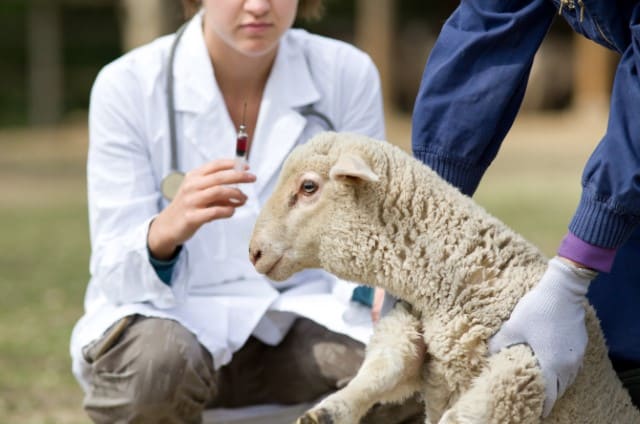
It is generally recommended that the vaccination be given to the pregnant ewe in the final trimester of gestation. There should then be a booster about a month later.
Also, remember the need for annual vaccinations.
If you have a lamb whose dam was not vaccinated during pregnancy, the good news is that it is unlikely to eat enough feed to lead to proliferation of bacteria until it’s about a month old.
The enterotoxemia bacteria is found in food with significant levels of crude protein. When these bacteria are ingested by a lamb, they excrete waste products that have a toxic effect on the animal.
As the central nervous system is affected, death can happen quickly.
Some farmers will vaccinate lambs first at two weeks of age and again at one month. You should consider giving the vaccination for tetanus around this time.
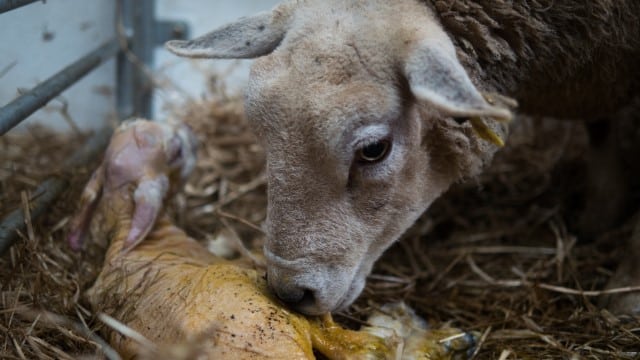
However, experts say that a lamb’s immune system will not be sophisticated enough for the vaccine to have its intended effect until it is one month old.
This is the point at which it is recommended that you do the vaccination in most circumstances. You can even find dual vaccines that cover not only Clostridium perfringens Types C & D but also Clostridium tetani.
What Vaccine to Use
It’s advisable to go with a toxoid vaccine instead of an antitoxin. While an antitoxin will start working almost right away, its duration is a mere two weeks.
Toxoid vaccines do need between two weeks and a month to create full immunity, but it’s clearly worth the wait.
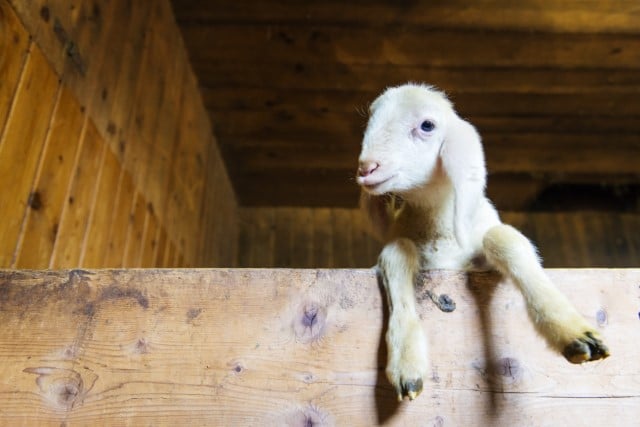
Do note, though, that if your lambs have already been eating a lot and you’re concerned about it, you should first administer the antitoxin and then administer the toxoid vaccination in two weeks. Ask your veterinarian for more information.
Male lambs are prone to developing kidney stones (urinary calculi), so you should ensure a 2:1 calcium to phosphorus ratio in the creep feed.
You could also find a 1% feed grade limestone and include a small amount of this to help cut down on the risk of kidney stones.
How to Decide When to Wean Lambs
There are many different factors to consider when deciding when your lambs should be weaned. Some of these include the size and nature of your operation, your target market, how much pasture you have available, and others.
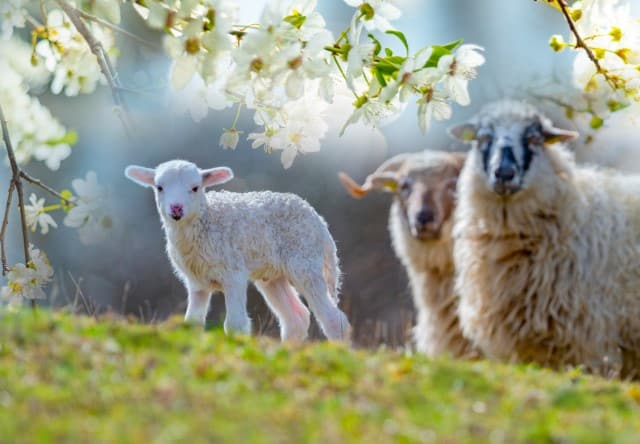
Contrary to what you might imagine, by three weeks after birth a lamb will have a rumen developed enough to make its eating food directly a more efficient way than getting that same food nutrients from the mother by way of milk.
This coincides with how the ewe’s milk production will generally be at its highest at three weeks after it has given birth and then taper off after that.
This is one reason why the most common time for weaning is sometime between three weeks after birth and eight weeks after birth.
When timing creep feeding, keep in mind that it’s best for lambs to have done creep feeding for about six weeks before they will go to pasture.
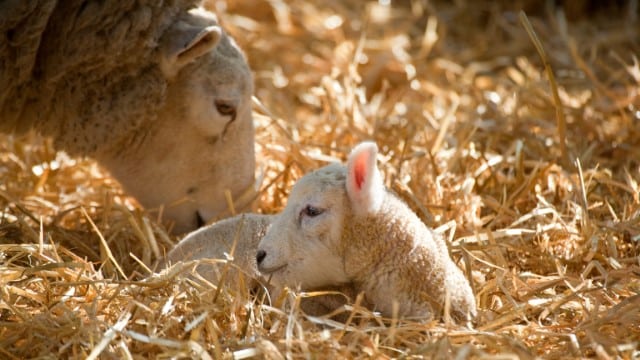
This means that they will be used to eating and comfortable with it. If a lamb goes to pasture without being used to eating, they may not eat enough and could be in danger of malnutrition.
Understanding Creep Feeding for Lambs is Essential
It’s clear that creep feeding is a tool that will help keep your lambs healthy and maximize production on your farm.
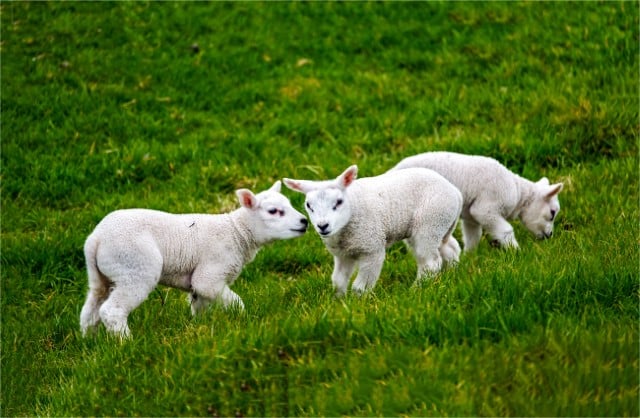
Make sure to provide the right kinds of food and follow the tips we set out above when setting up your creep arrangement.
Remember the ways that you can prevent disease and optimize growth and development in your lambs.

